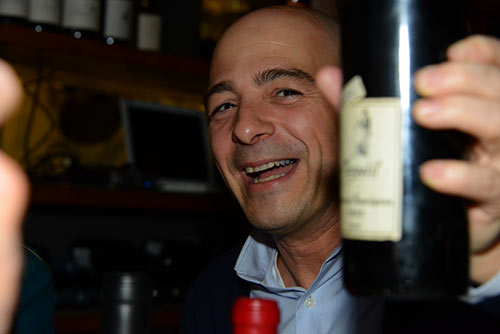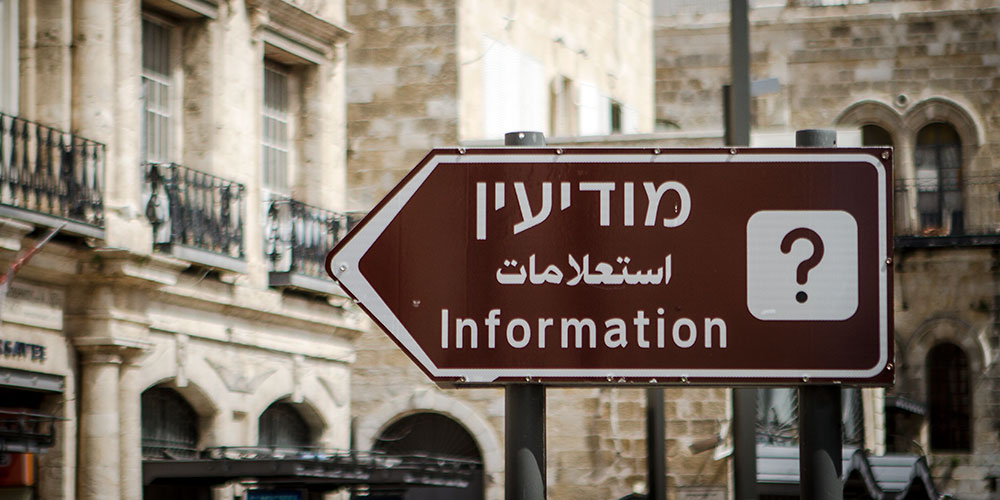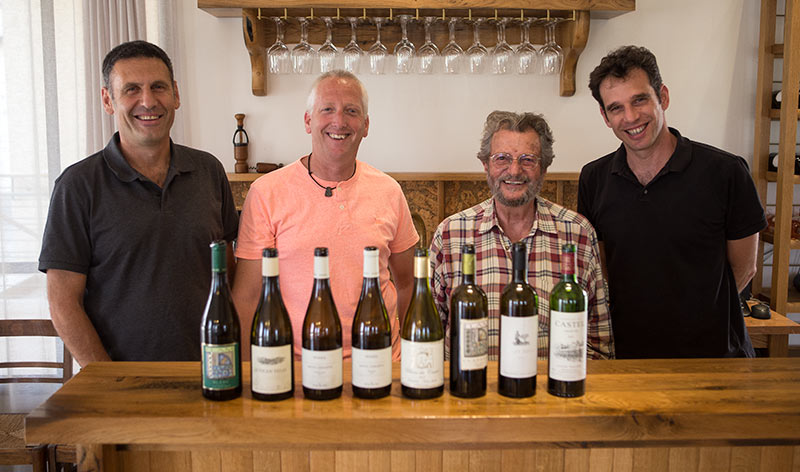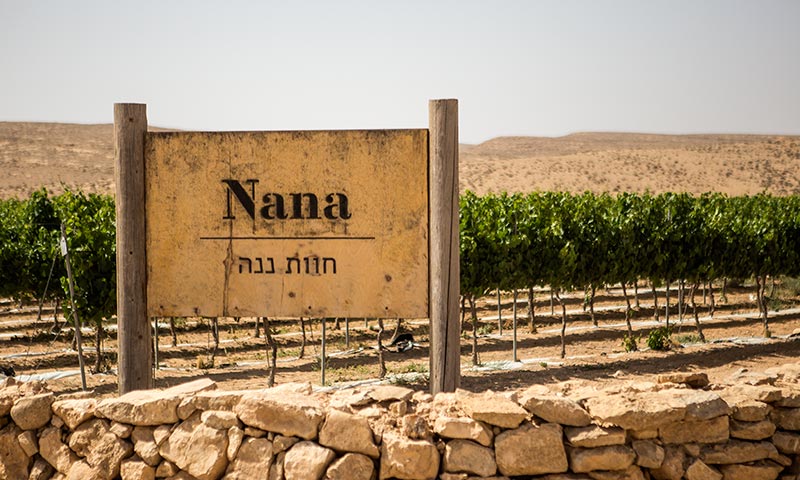
Following are my general impressions of how the Israeli wine industry sits currently. Note that this is based solely upon my week spent there at the invitation of Kinetis which covered the history, middle of the country, north of the country, and a bit of the south. This hardly makes for a complete picture, but there were many markers that were similar to other places that I’ve visited which in turn provided for a greater base of extrapolation or more colloquially, assumptions. Please note that if you feel I’ve made an ass out of you, me, and possibly your country, let me know below in the comments.
Drink More
Everywhere we went we heard that the general per capita consumption was about 4-7L a year. That’s nothing. While I’m at the edge of the extreme (the French always push the envelope in this), I think I drink that in a month. Needless to say, for the wine industry to grow, the people of Israel need to drink more of it.
I found it surprising how little people drank given that Judaism is the only religion I know that has actual wine drinking baked in to it. If I was the least bit religious, that might very well interest me, but otherwise, it hasn’t translated in to as much domestic wine drinking as you’d think.

Education
The picture above is Yair Haidu (provided by Kinetis.) He is without a doubt the most awesome person in Israeli wine. He knows his shit backwards and forwards and can immediately tell you the 10 best wines in current Israeli vintages. We met him on our last night in the country and even after a week there, he opened up a great deal more of the facts on the country. I’m sure part of it comes from being French Israeli, but the other part comes from being incredibly curious about wine. They need to clone him and spread the word.
There are some groups that are working to organize more education like the Grape Man or this dinner in a home we went to in the old town of Jaffa. These don’t really seem to be making the grade though as while the people running them are wine lovers, they don’t have the proper education to further boost wine knowledge domestically. They’re not necessarily doing anything to retard the growth of wine enjoyment for Israelis but at the same time, they’re also not pushing it forward.
Also not helping is that with since the death of Daniel Rogov, no one has stepped up to replace him as the pre-eminent wine writer in the Israeli wine scene. That was surprising as it seems like an area ripe for conquest, but while there are some wine writers who seem to know what they’re doing, no one has been able to really punch it up to the next level although they’ve been releasing a new guide in Hebrew. This hasn’t seemed to have taken off just yet as everyone still talks about the Rogov book despite the last edition being from 2011.
Quality
Overall, the wines of Israel run the “decent” level at around that 87-89 point range. There are indeed some excellent wines out there which will knock your socks off and have you ask for a new pair only to have those knocked off as well . We were thankful to taste a good number of these and what more we tasted with Yair (it always comes back to him) showed that there are many, many more to be found.
Unfortunately there are still wines that I consider to be a bit “broken” which I didn’t write about in previous articles due to that. Yatir was one of the biggest surprises as they’re continually hailed as the first wines to receive high points from Mr. Parker which might go to show why Parker’s influence it fading. While I didn’t hate the wines like my fellow travelers (with the exception of the Petit Verdot which was just painful), they smacked of heavy cellar manipulation, brett, and generally being flat. Oddly enough, their parent cellar, Carmel, from up north had similar issues despite being a fully different staff and a different region.
Another unfortunate tasting was Assaf. And it was even more so because the couple running the winery are truly lovely people with what is probably a beautiful piece of land up in Golan Heights. Their whites were decent, but the reds had a bizarre, muted marmalade quality to the front of the palate that drowned out the body of the wine. Also, one of them had massive volatile acidity that scorched all of our palates. I hope they can work with a consulting enolog to fix these issues as they’re all problems in the cellar.
Then there was Bravdo who are a big producer, but it unfortunately shows. Again, nice enough people, but as others confirmed to us, they’re producing wines from an Israel of 20 years ago. Initially upon tasting their Chardonnay blindly I thought it was palatable, but then once tasting all of their wines at the cellar, they were completely lacking in fruit (with maybe the exception of the Syrah which was decent) because of obvious overproduction of the vines. If they could bring themselves around to water less and cut back the bunches, they could probably produce very nice wines as they seem to have the know how.
Regions
This is the sticky point I always come back around to as I grew up in a country with floppy, non-potent wines regions (the American Viticultural Areas) to then move to a country with strict regulations (the Denominations of Origin) which of course is just across the border from the strictest regions of all, the AOCs in France. Winemakers complain endlessly about them as they bind their hands a great deal. Admittedly yes, they can be too rigid and they don’t adapt quickly, but this hand binding stops a Wild West shootout in the vineyards which no one wins. As I wrote about in regards to Croatia, if you don’t have them you’re doomed to sitting in standby while everyone else boards the fame plane.
This lack of official wine regions is killing the Israel wine industry more than anything else from a marketing front because:
What is an Israeli wine?
They have something of an image internationally wherein Israel = Kosher = weird wine. The fact is, only 50% of the wine produced is Kosher. If you were to ask me what Israeli wine is, I’d say it’s wine that currently traces its roots to modern French production and is using a great deal of Bordeaux grapes with a smattering of others from further south. But no one is going to know that if there’s no official stamp on the bottle and push behind it to say, “Israeli Wine: Not just boiled and Kosher. Just wine.”
I would say to continue to emulate France. Have an equivalent of Vin de Pays minus the geographic designation but most definitely with certified analysis and tasting. So, if you produce the wine in Israel with Israeli grapes, then bam, you get this which is basically what there is now but non-certified. Then, take it a step further to have the DO/AOC setup based upon the main five regions or even more if you like but all those wines are from those regions and vinified only in those regions. Take it one step further if you like and have the “village” level, but I think that outside of Golan Heights, most regions are not quite ready for that step, although I’ll happily be proven wrong.
This would all go a long way to solving a great many of the issues mentioned above. If someone knew that they liked the Cabernet Sauvignon of Carmel or the Sauvignon Blanc of Golan Heights it would take a great deal of the fear most people feel when entering a wine shop, much in the same way people in the US walk in to a shop say a price and Napa Valley and walk out happy. But it would also impose controls that would kick a great many in the ass to get their cellar issues in line or be threatened to not have certification. And of course it would allow a greatly simplified process of marketing the wines abroad. A Galilee wine would truly be just that. You don’t hear French producers bouncing around trying to market “French wine”, do you? No, they market Burgundy or Rhône or Champagne because they have these regions. They are obviously at the extreme of regional development but this is why we all say, “terroir” as opposed to the easier to understand “locale” in English.
Price
This is subjective to where the wine drinker is located. If you’re in the US, then the Israeli wine prices might not seem that high. Given that a lot of wines run around 120 NIS and up (about 25€) that’s pretty pricey for someone like me who can get great wines for half or a third of that domestically. Spain may be at the extreme when it comes to affordable wines that are good quality, but there are plenty of good, affordable wines in Italy and France as well. These prices even give the Croatians a run for their money which isn’t a good thing.
While it seems that to do anything in Israel is expensive due to higher labor and production costs, the Israeli wines have basically been put in to the upper echelons of the market. If people want a basic wine to drink, they opt for an import. As it seems that the wineries sell everything they produce, this system appears to working currently, but in order for it to grow, they need more low-end wines. Every winemaker I know in Spain loves to produce their 50€ a bottle wines, but it’s the ones for 5€ a bottle that keep the lights on.
There was however one exception to the rather high prices and that was Shvo. Both their red and white blends are quite good and, for the Israeli market very well priced in, if I remember correctly at 90 NIS (18€) or so. Still not a bargain, but then again, they’re good wines for what is locally, a good price. More of that would definitely help boost the market.
In Closing
There is a great deal of promise in Israel and as it currently sits you can indeed trust a bottle of wine from Israel to be a good wine if you find it at your local store. As always, there is more room to grow and I hope to have the chance to visit again and see where everyone has taken it.
Many thanks to everyone who hosted me and especially Adi Koren at Kinetis who did most of the leg work for this tour and sat in a minibus full of people reeking of wine and delicious food for a week.


